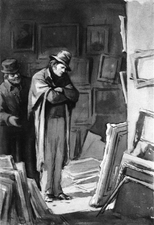LONDON BRIDGE
Познавательная презентация о самом известном в Лондоне мосте над Темзой.
Скачать:
| Вложение | Размер |
|---|---|
| 440 КБ |
Предварительный просмотр:
Подписи к слайдам:
Слайд 1
London BridgeСлайд 2
“ Old” London bridge Building work began in 1176, supervised by Peter of Colechurch. The costs would have been enormous, and king Henry II attempted to meet them with taxes on wool and sheepskins, but the project continued past his own lifetime. It was finished by 1209 during the reign of King John. It had taken 33 years to complete, and John licensed out building plots on the bridge to help recoup the costs; but it was never enough. The bridge was some 26 feet (8 m) wide, and about 800–900 ft long, supported by 19 irregularly spaced arches, founded on "starlings" set into the river-bed. It had a drawbridge for the passage of tall ships up-river, and defensive gatehouses at both ends. By 1358, it was already crowded, with 138 shops. At least one two-entranced, multi-seated public latrine overhung the bridge parapets and discharged into the river below; so did an unknown number of private latrines reserved for Bridge householders or shopkeepers and bridge officials. In 1382-3 a new latrine was made (or an old one replaced) at considerable cost, at the northern end of the bridge.
Слайд 3
“ Old” London bridge (more modern) The buildings on London Bridge were a major fire hazard and increased the load on its arches, several of which had to be rebuilt over the centuries. In 1212, perhaps the greatest of the early fires of London broke out on both ends of the bridge simultaneously, trapping many people in the middle. Houses on the bridge were burnt during Wat Tyler's Peasants' Revolt in 1381 and during Jack Cade's rebellion in 1450. A major fire of 1633 that destroyed the northern third of the bridge formed a firebreak that prevented further damage to the bridge during the Great Fire of London (1666). By the Tudor era there were some 200 buildings on the bridge. Some stood up to seven stories high, some overhung the river by seven feet, and some overhung the road, to form a dark tunnel through which all traffic must pass, including (from 1577) the palatial Nonsuch House. The roadway was just 12 feet (4 m) wide, divided into two lanes, so that in each direction, carts, wagons, coaches and pedestrians shared a passageway six feet wide. When the bridge was congested, crossing it could take up to an hour. Those who could afford the fare might prefer to cross by ferry but the bridge structure had several undesirable effects on river-traffic. The narrow arches and wide pier bases restricted the river's tidal ebb and flow, so that in hard winters, the water upstream of the bridge became more susceptible to freezing and impassable by boat. The flow was further obstructed in the 16th century by waterwheels (designed by Peter Morice) installed under the two north arches to drive water pumps, and under the two south arches to power grain mills; the difference in water levels on each side of the bridge could be as much as six feet (two metres), producing ferocious rapids between the piers. Only the brave or foolhardy attempted to "shoot the bridge"—steer a boat between the starlings when in flood—and some were drowned in the attempt. The bridge was "for wise men to pass over, and for fools to pass under."
Слайд 4
“ New” London bridge By the end of the 18th century, it was apparent that the old London Bridge — by then over 600 years old — needed replacement. It was narrow and decrepit, and blocked river traffic. In 1799, a competition for designs to replace the old bridge was held. Entrants included Thomas Telford, whose proposal of a single iron arch spanning 600 feet (180 m) was rejected as unfeasible and impractical. John Rennie won the competition with a more conventional design of five stone arches. It was built 100 feet (30 m) west (upstream) of the original site by Jolliffe and Banks of Merstham, Surrey, under the supervision of Rennie's son. Work began in 1824 and the foundation stone was laid, in the southern coffer dam, on 15 June 1825. The old bridge continued in use while the new bridge was being built, and was demolished after the latter opened in 1831. New approach roads had to be built, which cost three times as much as the bridge itself. The total costs, around £2.5 million (£186 million as of 2013), were shared by the British Government and the Corporation of London. Rennie's bridge was 928 feet (283 m) long and 49 feet (15 m) wide, constructed from Haytor granite. The official opening took place on 1 August 1831; King William IV and Queen Adelaide attended a banquet in a pavilion erected on the bridge.
Слайд 5
Modern London bridge The current London Bridge was designed by architect Lord Holford and engineers Mott, Hay and Anderson. It was constructed by contractors John Mowlem and Co from 1967 to 1972,and opened by Queen Elizabeth II on 17 March 1973. It comprises three spans of prestressed-concrete box girders, a total of 928 feet (283 m) long. The cost of £4 million (£42.1 million as of 2013), was met entirely by the Bridge House Estates charity. The current bridge was built in the same location as Rennie's bridge, with the previous bridge remaining in use while the first two girders were constructed upstream and downstream. Traffic was then transferred onto the two new girders, and the previous bridge demolished to allow the final two central girders to be added.

Галка в чужих перьях

Бабочка

Распускающиеся бумажные цветы на воде

Заяц-хваста

"Портрет". Н.В. Гоголь
